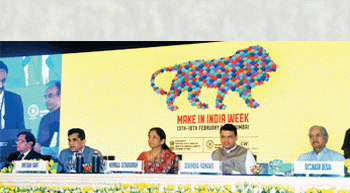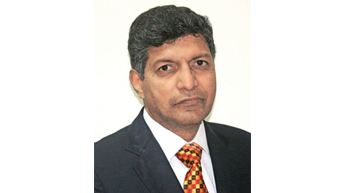quite like the manufacturing and services sectors depend on quality of infrastructure for their competitiveness, our agriculture also will be able to make a difference
FlashNews:
India Expands Energy Security with Landmark US LPG Deal
MoS Pemmasani Calls for Global Cybersecurity Unity at WTDC‑25
Minister Puri Highlights $68 Billion Indo‑Japan Energy Partnership in Tokyo
India Maps 224 GW Pumped Storage Potential as Policy Push Gains Momentum, Says Manohar Lal
IndiGo Expands Long‑Haul Network with Direct Delhi-Manchester Dreamliner Service
India’s Century‑Old Infrastructure Cooperative Pioneer, ULCCS, Secures ICA’s Global Heritage Recognition
Air India to Resume Non-Stop Flights to Shanghai from February 2026
India Urges Inclusive EU Space Act to Support Global Space Governance
S&P Global Rebrands Commodity Insights as S&P Global Energy
NITI Aayog Calls for Energy Market Reform Amid Global Transition and Geopolitical Challenges
Godrej Aerospace Delivers Human-Rated Vikas Engine for Gaganyaan Mission
Railway Board Tightens Garbage Disposal Rules for Trains
IndiGo Launches India’s First Direct Flight to Cambodia from Kolkata
RIB Software India Expands Market Presence
India Approves Royalty Reform to Unlock Critical Minerals, Bolster Green Energy, Cut China Reliance
Kolkata Surges as Warehousing Sector Rebounds 64% in Q3 2025; Pune and Bengaluru Lag Behind: Vestian
Inox Wind Secures 100 MW Turbine Supply Order in Gujarat
India Eyes 10% Share of Global Green Hydrogen Market by 2030: Shripad Yesso Naik
CareEdge-ESG and RAEX Ink Strategic MoU to Advance Global ESG Collaboration
Tag: Make In India
Make in India Exhibition extravaganza
The first Make In India Week was held in Mumbai and was the biggest ever show of the country´s manufacturing prowess. With a business commitment of Rs.15.20 lakh crore in investments, the Make In India
Shipyard industry gets infra status
The government has granted infrastructure status to the shipyard industry in a boost to its Make in India initiative. The move is expected to bring down borrowing costs for the industry. At present, companies pay average interest of 14-15 per cent on their borrowings.
The future in India seems challenging, yet promising
Firstly, while the global market remains volatile and has an impact on the Indian economy, India is expected to retain a growth rate of 7.3 per cent for FY 2015-16, as per the International Monetary Fund (IMF).
Instrumental Role
The government has appointed Amitabh Kant, Secretary in the Department of Industrial Policy and Promotion (DIPP), as full-time Chief Executive Officer of NITI Aayog. Kant, who has been helming some of the marquee initiatives of the Narendra Modi Government, will take over the job after his retirement as secretary in February end.
Ports – Porting Ahead
A lot of optimism has set in with 100 per cent FDI inflow, the Sagarmala Project, greater thrust on PPP projects, and the ´Make in India´ initiative. The Indian ports and shipping industry plays a vital role in sustaining growth of the country´s
Telecom – In the spectrum
Consolidation in Indias fragmented telecom industry and estimated spurt in manufacturing have opened up new growth avenues. With close to 1 billion mobile subscribers, India is the second-largest as well as one of fastest growing telecommunication markets in the world.
The market is already quite big but not as big as it should be
This is all about connectivity and a country needs to have infrastructure in roads, railways, energy, power plants and being able to provide the necessary infrastructure that is needed, in the case of India, to achieve a good degree of success with the Make in India campaign.
APM Terminals Pipavav is the first public private partnership in the sector
APM Terminals Pipavav currently has a capacity to handle up to 850,000 TEUs of containers, 4-5 million MT of dry bulk cargo, 2 million MT of liquid cargo and about 250,000 cars per year. We are currently in the midst of an expansion primarily to increase the container handling capacity from 850,000 TEUs to 1.35 mn TEUs a year.
More than 36 PPP projects have been successfully launched
As such there is no diversion of cargo from the major ports to the non-major ports. As far as the traffic at major ports is concerned, there is consistent traffic flow and is largely on the increasing trend. However, non-major ports are also attracting cargo due to being captive ports and having no regulatory mechanism like TAMP, etc.










